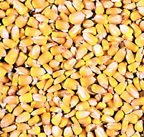



The Value and Use of Distillers Grains
US - The ethanol industry is one of the most rapidly growing segments of U.S. agriculture. Approximately 40% of fuel ethanol is produced by wet-mills; these plants produce wet or dried corn gluten feed, corn gluten meal and corn germ meal as the primary by-products.
Dry-grind ethanol plants represent the fastest growing segment of the fuel ethanol industry in the U.S., and produce the majority (60%) of fuel ethanol. By-products from dry-grind ethanol plants include wet and dried distillers grains, wet and dried distillers grains with solubles, modified “wet cake”, and condensed distillers solubles.
Of these dry-grind ethanol plant by-products, distillers grains with solubles (DDGS) is the predominant by-product being marketed domestically. Several relatively new ethanol plants were designed and built without dryers. As a result, approximately 40% of the distillers grains with solubles is marketed as a wet by-product for use in dairy operations and beef cattle feedlots. The remaining 60% of distillers grains with solubles is dried (DDGS) and marketed domestically and internationally for use in dairy, beef, swine and poultry feeds. More than 8 million metric tonnes of distillers grains with solubles will be produced in the year 2006. Some industry experts are predicting that distillers by-product production will reach 10 to 14 million metric tonnes within the next few years. Corn is the primary grain used in wet mills and dry-grind ethanol plants because of its high fermentable starch content compared to other feedstocks. Therefore, the majority of information included on this Web site involves the evaluation of corn distillers by-products in livestock and poultry feeds. However, some ethanol plants use sorghum, or blend corn with barley, wheat or sorghum to make ethanol and distillers by-products, depending on geographical location, cost, and availability of these grains relative to corn. The beverage alcohol industry also produces grain by-products in the form of DDGS (whiskey distilleries) or brewers grains (beer manufacturing). As a result, we have also included a section for research and technical information specific to sorghum DDGS (see Types of Distillers By-products). All of these by-products are nutritionally different from each other and have different economic value in various types of animal and poultry feeds. There are a wide variety of ethanol by-products available to livestock and poultry producers, but they vary in nutrient content, quality, and feeding value.
Because of the large supply of distillers grains by-products (including DDGS) available to the feed and livestock industry, researchers at several Land Grant Universities have been conducting experiments to evaluate the nutritional value of these by-products in order to develop feeding recommendations for dairy, beef, swine, and poultry. In addition to DDGS research conducted by scientists in the Department of Animal Science at the University of Minnesota, we are pleased to provide you with research and technical publications from researchers at:








